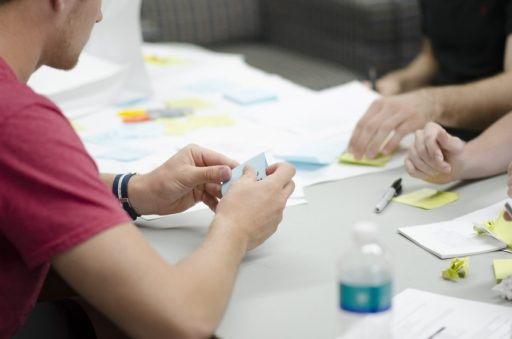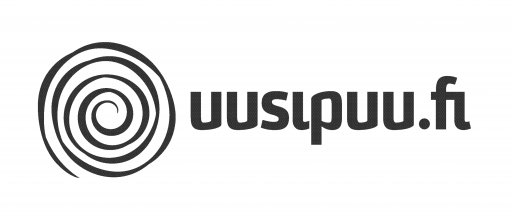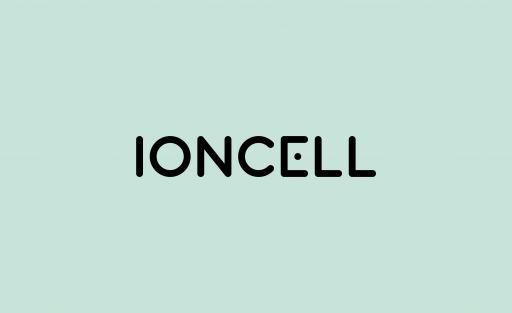Enforce Multidisciplinary Collaboration
When people from various professional backgrounds work together, there are always challenges to make communication, working methods, processes and scheduling to work. On the other hand, when successful, this kind of collaboration can give new perspective, broaden mindsets and make room for new kinds of innovations. Here are some thoughts about multidisciplinary work from few of Finnish professionals:
“Designers should be involved in materials research and technology development on early stages”

Pirjo Kääriäinen, Professor of Practice
School of Arts, Design and Architecture, Aalto University
During the DWoC project we get to experience at first hand how cooperation between designers and material engineers works in practice and what results can be produced.
The research won’t focus solely on developing a certain characteristic of the raw material or of the production technology. The possibilities of what can be produced from cellulose will be tested through hands on prototyping and trial and error, and at the same time, various potential application areas are explored.
The aim is to freshen the image of cellulose as a material of the future. Getting young people interested in materials, in general, is increasingly important no matter how digitalized our world will be, people will always need physical products. The importance of sustainable development in our daily lives will grow and it will have to be taken into account in all activities.
Using the skills in design and architecture gained from Aalto University we can communicate the results of the project in an interesting way to a variety of audiences. Startups, as well as existing businesses, can find new ideas to inspire their own product development from the results obtained during the project.
“The advancement of entrepreneurship is strongly involved”
Ainomaija Haarla, Senior Advisor; Professor Emerita, Corporate Entrepreneurship
School of Chemical Engineering, Aalto University
Design firms and other creative entrepreneurs are always looking for new interesting materials which mean that supply and demand are matched as part of this project. Cellulose is a brilliant raw material, which has numerous functional attributes. And since Finland’s forests produce wood faster than the existing industry can harvest it, there won’t be a shortage of the material either.
Design firms are in an important position in increasing the use of cellulose. We will strive to build new ecosystems centered on design driven companies as well as advancing entrepreneurship and the creation of new startups by supplying business concepts to help the firms.
The method in question is a new approach to implement the so called promotional theory into the wood fiber industry. Economists bring an essential element into engineering work and creative design. We will also research value chains related to new materials and understand how such new products can be priced. In this way, we will supply concept ideas to support firms.
“The aim is to enable a breakthrough in new innovation”
Ali Harlin, Research Professor
Technical Research Centre of Finland (VTT)
In the last 10 years, we have learned more about the attributes of cellulose than in the previous 100 years. We are now in a rapidly advancing development cycle where new uses of cellulose are constantly revealed to us researchers. The project in question (DWOC) has been both a learning and training exercise.
The central aim of the project has been to break old assumptions and create in their place a new design- driven emphasis for traditional cellulose.
The existing machinery of the cellulose industry cannot be changed quickly so the development of processes has to be done at the same time. For the production of new cellulose-based products, we need to develop compact processes that work in the same location like 3D -printing, direct production of textiles and filaments, film production techniques and various combinations of these. The list is long.
Our aim throughout the project is to quicken our knowledge refinement and by so doing reveal the distinctive attributes of the material, like its recycling capabilities, combined with new production processes to enable a breakthrough for cellulose utilizing innovations.
Projects
 CHEMARTS is a long-term strategic collaboration between two Aalto University schools, The School of Chemical Technology (CHEM) and The School of Arts, Design and Architecture (ARTS). The schools merged their forces with the aim to invent new ways to harness wood and cellulose. The idea is to research the performance and design of advanced cellulosic materials for innovative uses.
CHEMARTS is a long-term strategic collaboration between two Aalto University schools, The School of Chemical Technology (CHEM) and The School of Arts, Design and Architecture (ARTS). The schools merged their forces with the aim to invent new ways to harness wood and cellulose. The idea is to research the performance and design of advanced cellulosic materials for innovative uses.
The main objective is to inspire students and researchers to explore biomaterials together and to create new concepts for the future use of cellulose and other biomaterials. CHEMARTS consists of various actions, such as multidisciplinary study courses, summer projects for Masters’ students and externally funded research projects.
http://chemarts.aalto.fi/
https://www.facebook.com/chemarts.aalto/

CLIC Innovation is a Solution Architect for Global Bioeconomy & Cleantech Opportunities.
CLIC’s mission is to create comprehensive solutions with global business impact far beyond the capabilities of individual actors. In doing so, we address systemic challenges that arise from the scarcity of natural resources. CLIC will speed up the commercialization of new information by initiating and orchestrating solution oriented project portfolios covering the entire field from curiosity research to demonstrations. CLIC is the core local node of global cross-industrial and disciplinary competence network with business relevance.
The core of CLIC comprises of thirty world-leading companies of their own branch and the most significant national scientific institutions (17), to which bioeconomy and cleantech are the main business drivers and source of scientific inspiration.
 Design Driven Value Chains in the World of Cellulose (DWoC) is a multidisciplinary research collaboration project funded by Tekes (the Finnish Funding Agency for Innovation) focused on finding new and innovative applications for cellulosic materials. The DWoC project combines design thinking and design-driven prototyping with a strong competence in technology development. The project takes place 1.4.2013 – 31.3.2018. Read here more about DWoC.
Design Driven Value Chains in the World of Cellulose (DWoC) is a multidisciplinary research collaboration project funded by Tekes (the Finnish Funding Agency for Innovation) focused on finding new and innovative applications for cellulosic materials. The DWoC project combines design thinking and design-driven prototyping with a strong competence in technology development. The project takes place 1.4.2013 – 31.3.2018. Read here more about DWoC.
Carbon Sink Design Studio [Hiilinielu Design Studio]
The annual growth of Finnish forests is much higher than the amount of felled timber. Fresh ideas and courageous experiments on how to use wood in a new way are needed. Students and professionals of the forest-based bio fields and creative fields will join forces in the Carbon Sink Design Studio project (Hiilinielu Design Studio) where the aim will be in creating new business and work around bio products and design. It is a multidisciplinary joint project of the Universities of Applied Sciences in Tampere and Lahti, and Design Forum Finland. The results of the project will be presented at Helsinki Design Week in 2017.
The Carbon Sink Design Studio project started on 1.10.2015 and will end on 31.9.2017. The project is funded by EU’s structural fund ESF, the financing authority is Häme Centre for Economic Development, Transport and the Environment.
Ioncell – sustainable textile fibre for the future. Ioncell is a process that turns wood pulp, used cotton textiles or even old newspapers and cardboard into new high-quality textile fibres without harmful chemicals. The process uses an environmentally friendly solvent called ionic liquid, developed in Finland by the team of researchers from Aalto University and the University of Helsinki. Ioncell fibres feel soft and luxurious, and perform well in both clothing and technical applications. The production technology is currently in small pilot scale.
With the new material innovations we will be able to enjoy fashion with good conscience, at the same taking care of our precious planet.
NoMa
NoMa project applies the existing knowledge on lignocellulosic fibres and their processing to create novel structural fibre foams and biocomposites. In particular, the aim is to enable new material properties by combining different-scale fibres, fines, polymers and surface active proteins in processes. Design contributes to both the selection of raw materials and the tailoring of desired micro and macro structures through the opportunities provided by the new processes. The project supports the possibilities of companies to create new businesses and added-value products in the area of fibre-based biocomposites and porous consumer products.
SME’s need new ways to improve their profitability. The project supports this in terms of providing new challenging research topics and taking advantage of state-of-the-art technologies. Moreover, the development and commercialization of new fibre-based products, their production technologies and associated measurements are speeded up. During the project, the SME companies can effectively use the existing research infra structures, and at the same time, the required operations can be further improved based on the company needs. The projects will widen the application range of biobased fibre materials and will open up new markets for raw material and end-use producers of the Finnish bio economy in both short and long term perspective.
The project is carried out in co-operation between VTT and Lahti University of Applied Sciences (LAMK).

Trash-2-Cash aims to provide creative companies with new material solutions by giving a second life to zero-value waste and turning it into high-value materials that can be used in fashion, interiors, automotive and other high-value products.
http://trash2cashproject.eu/
https://www.facebook.com/EUtrash2cash/
 A new bioeconomy strategy has been drawn up for Finland, with the goal of creating competitive and sustainable bioeconomic solutions as well as new jobs. Strategies do not, however, implement themselves.
A new bioeconomy strategy has been drawn up for Finland, with the goal of creating competitive and sustainable bioeconomic solutions as well as new jobs. Strategies do not, however, implement themselves.
The New Tree project aims to increase awareness of the wood-based bioeconomy – of what tangible products and solutions are already available, their impact on society and the future growth potential of the sector.
http://www.uusipuu.fi/en/newtree
https://www.facebook.com/uusipuu/


